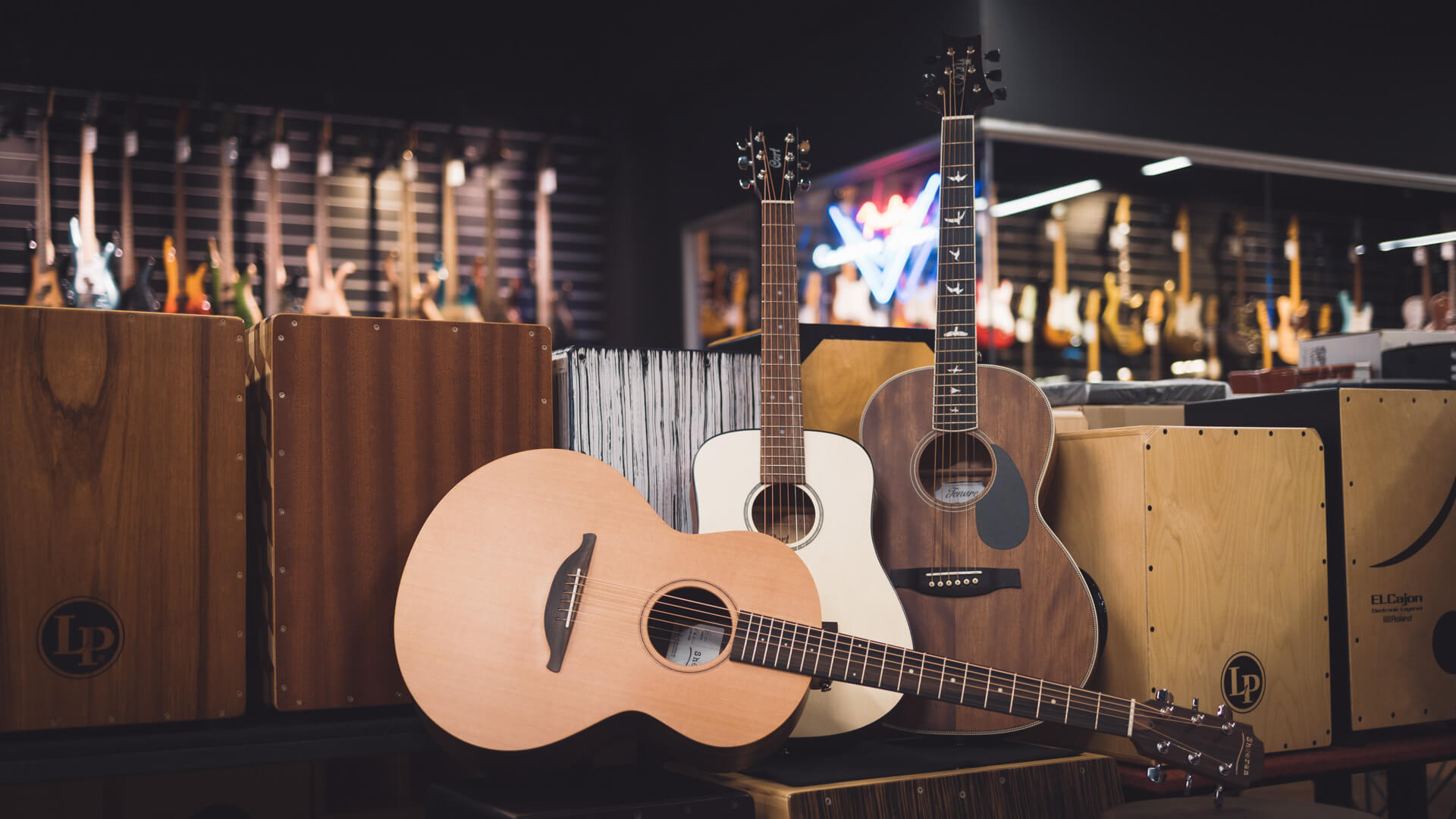Shopping for your first instrument should be the initial step in a lifelong journey of learning and inspiration. It can also be confusing because all musical instruments come in so many different makes and models.
What to look for when buying a guitar?
There’s no way to poke and prod anything you buy online before it’s at your door, so if you’re shopping in person, here are a couple of things to watch out for. One of the ways that guitar manufacturers save cost is by putting minimal labor into the final setup of the instrument. Often the parts are quality and the assembly is fine, but the fine-tuning that makes an instrument play well and sound its best is left to the consumer.
Check the neck of the guitar for any curves or bends. Ideally, your guitar should have a straight neck, and prevent the strings from hitting the frets as you play. If the guitar sounds all right and the action doesn’t look way out of whack, see if you can comfortably reach the entire fretboard. Run your finger along each side of the neck to see whether you can feel any of the ends of the metal frets sticking out.
Buying a new vs. used guitar
If your student is highly motivated and big enough to play a full size guitar, you may want to invest in a new instrument from a trusted manufacturer. By buying new you will get:
- Cutting edge technology
- Manufacturer’s Warranty
- Brand new look and feel
If you feel like your student is still exploring their options, or if you’re buying a ½ or ¾ sized guitar that will only be used for 3-4 years, a used instrument may bring the most value. The advantages of a used guitar can include:
- Vintage look and sound
- Less expensive
- Finding brands and styles no longer available new
Select the right guitar size
Good starter guitars come in many shapes and sizes, and finding an instrument that feels good and “fits” is super important for any aspiring student – especially younger students who are not yet fully grown. Incorrect guitar sizes can affect your ability to play, and young students can struggle with full-size guitars due to the width of the guitar neck, heavier weight, the wider spacing of the frets, and may be unable to play all the notes.
While it may be tempting to buy a full size model that a student can “grow into,” the reality is that a student will likely become frustrated trying to play an instrument that is too large for their body and hands. Several guitar manufacturers make small scale guitars, and these can be great options for young students who are just starting out.
